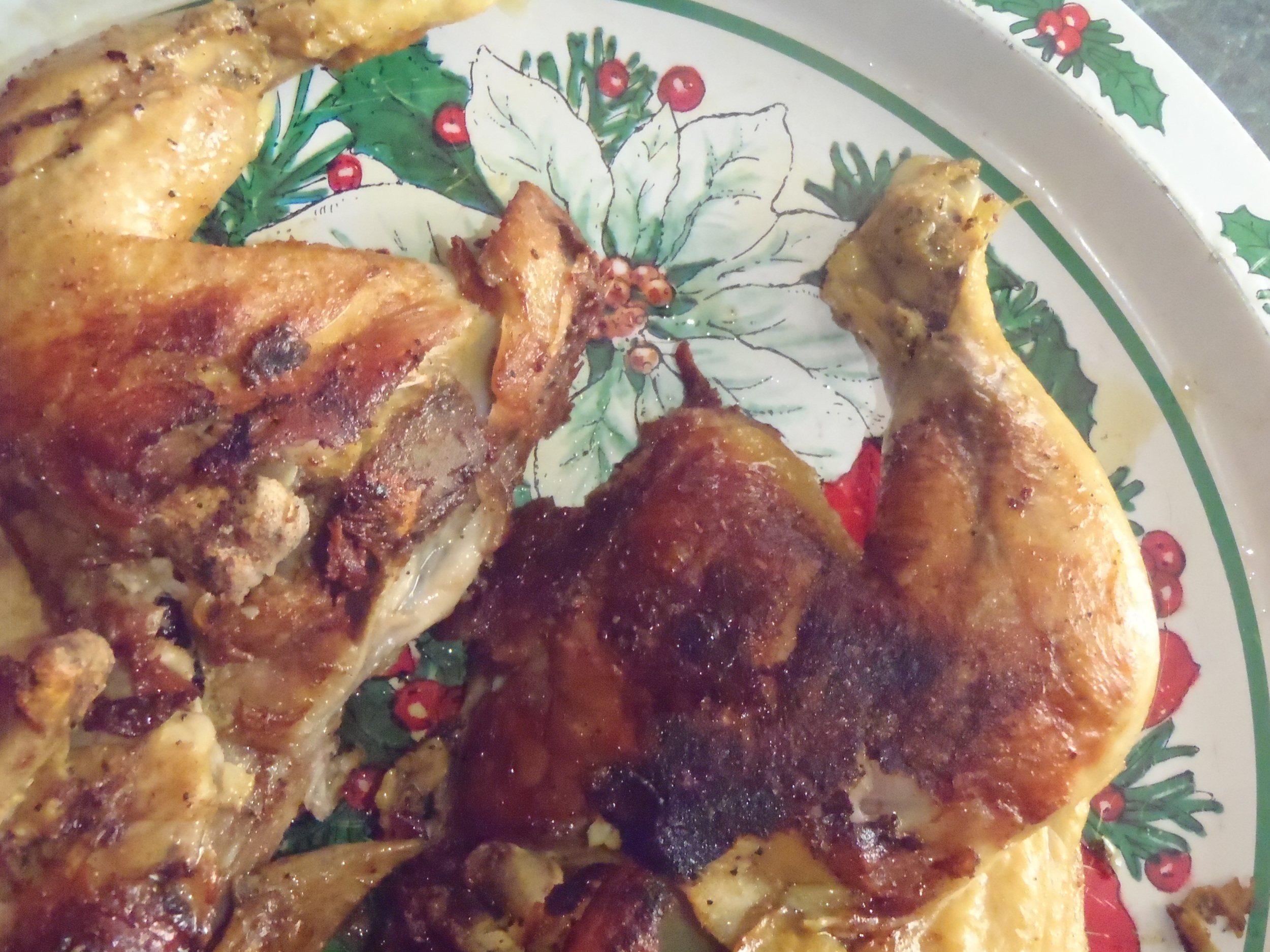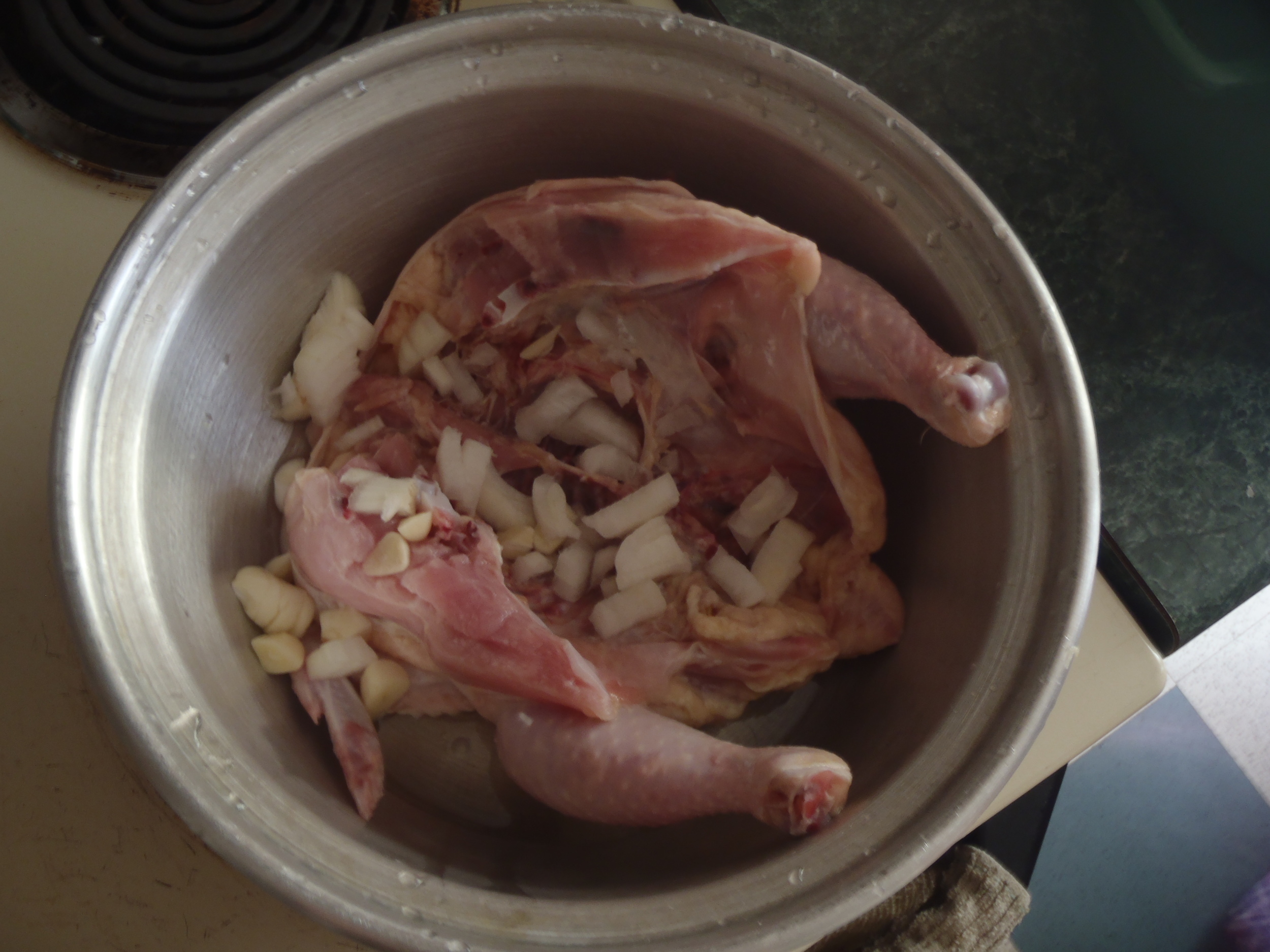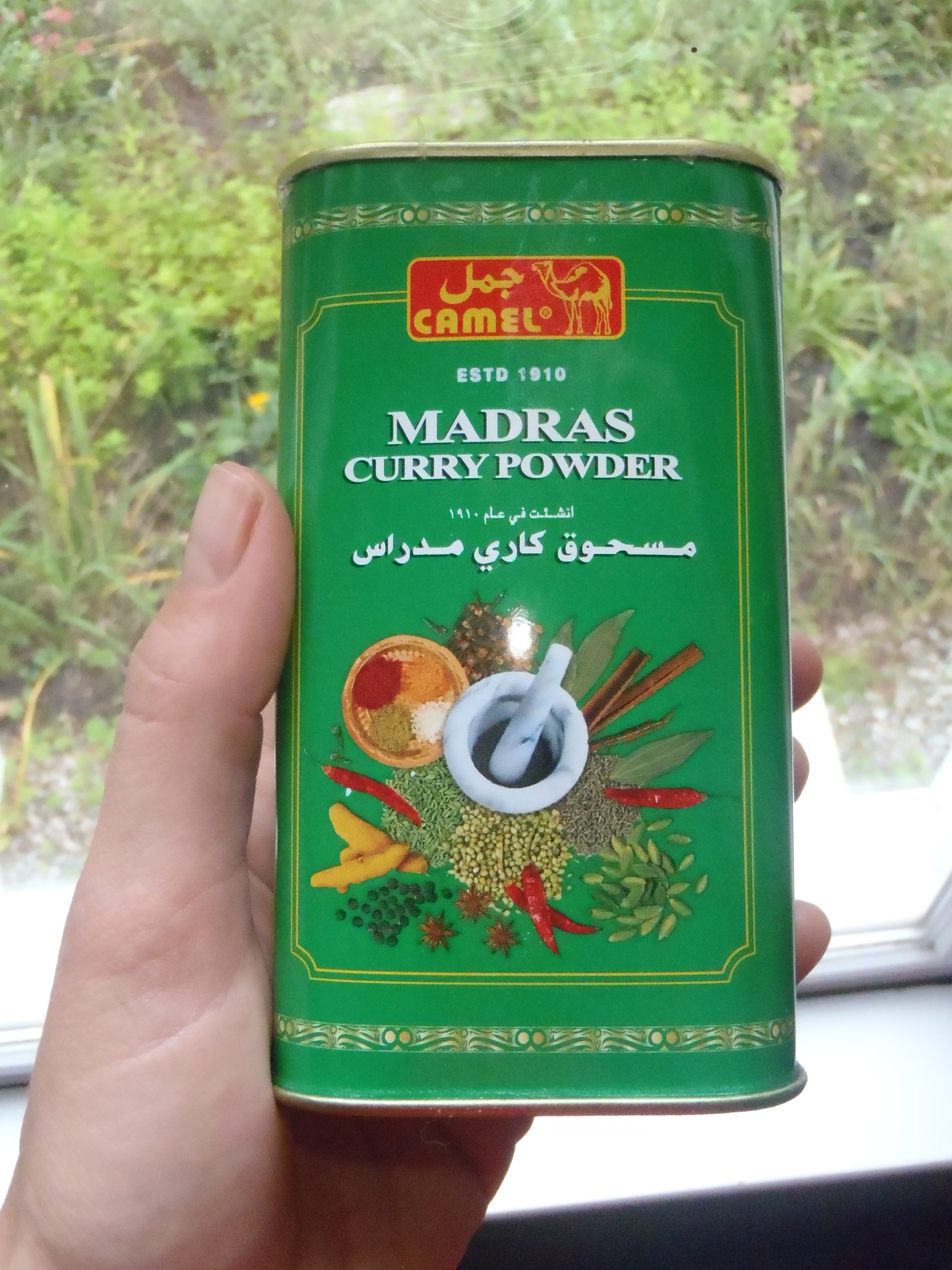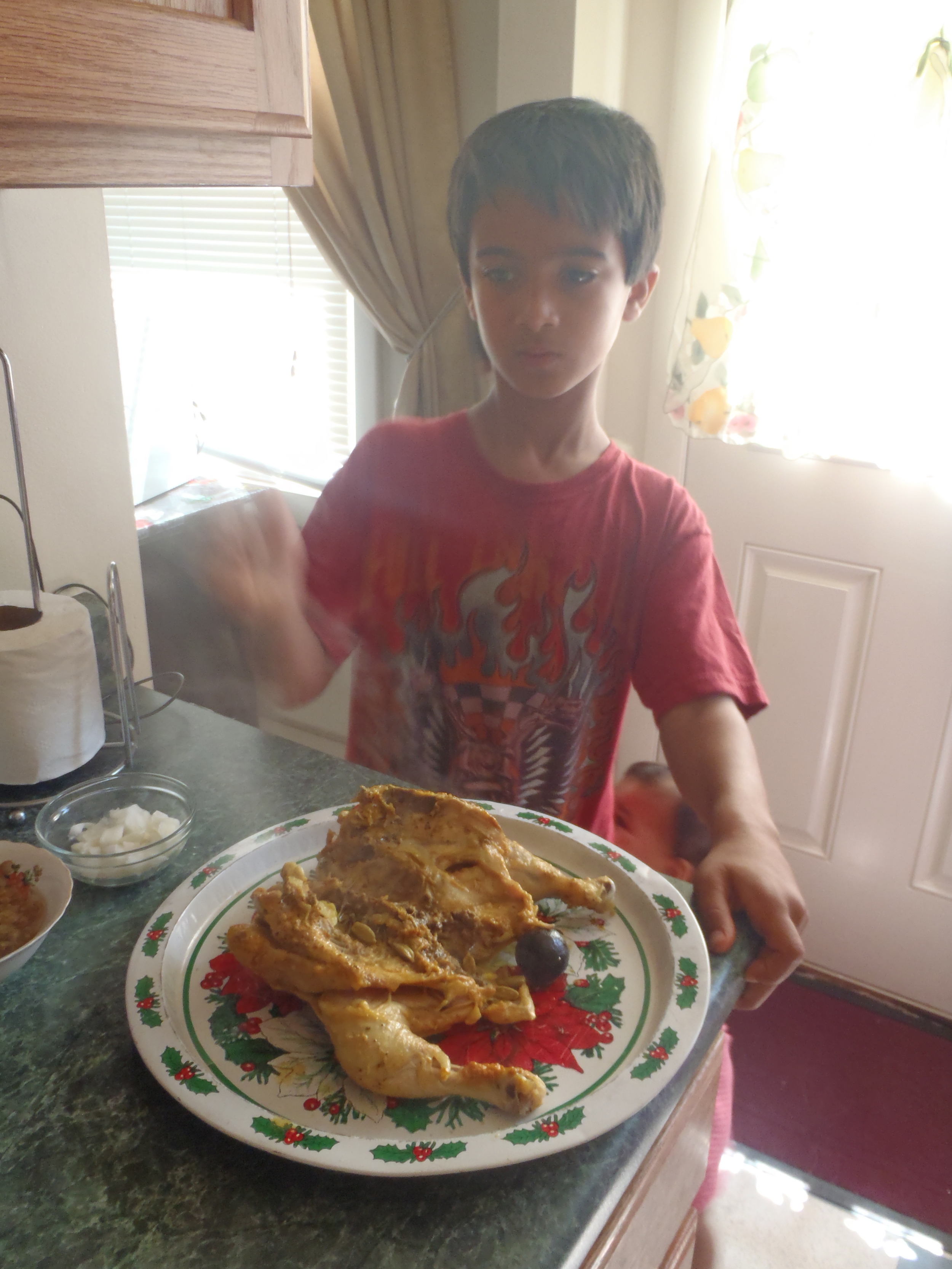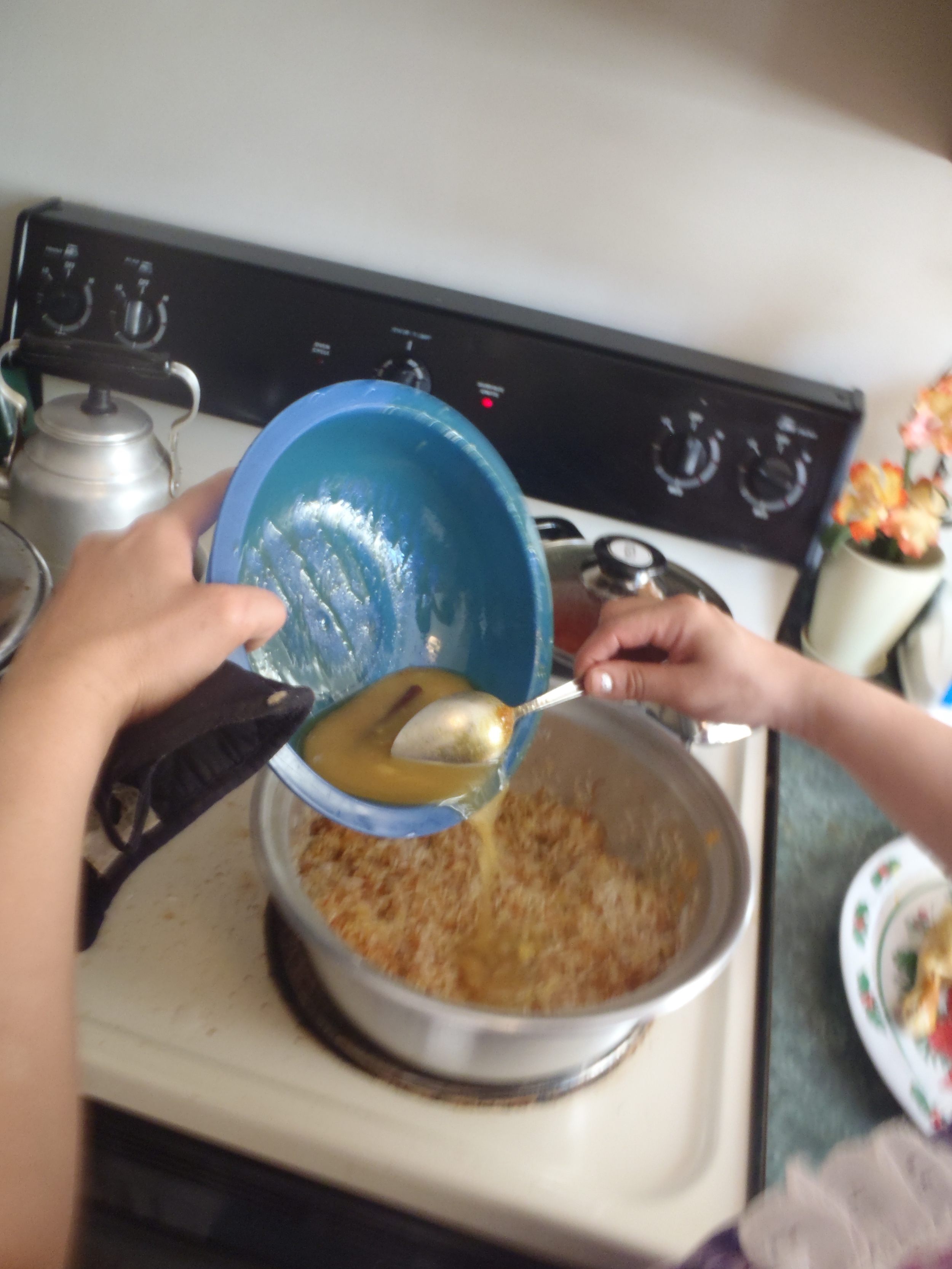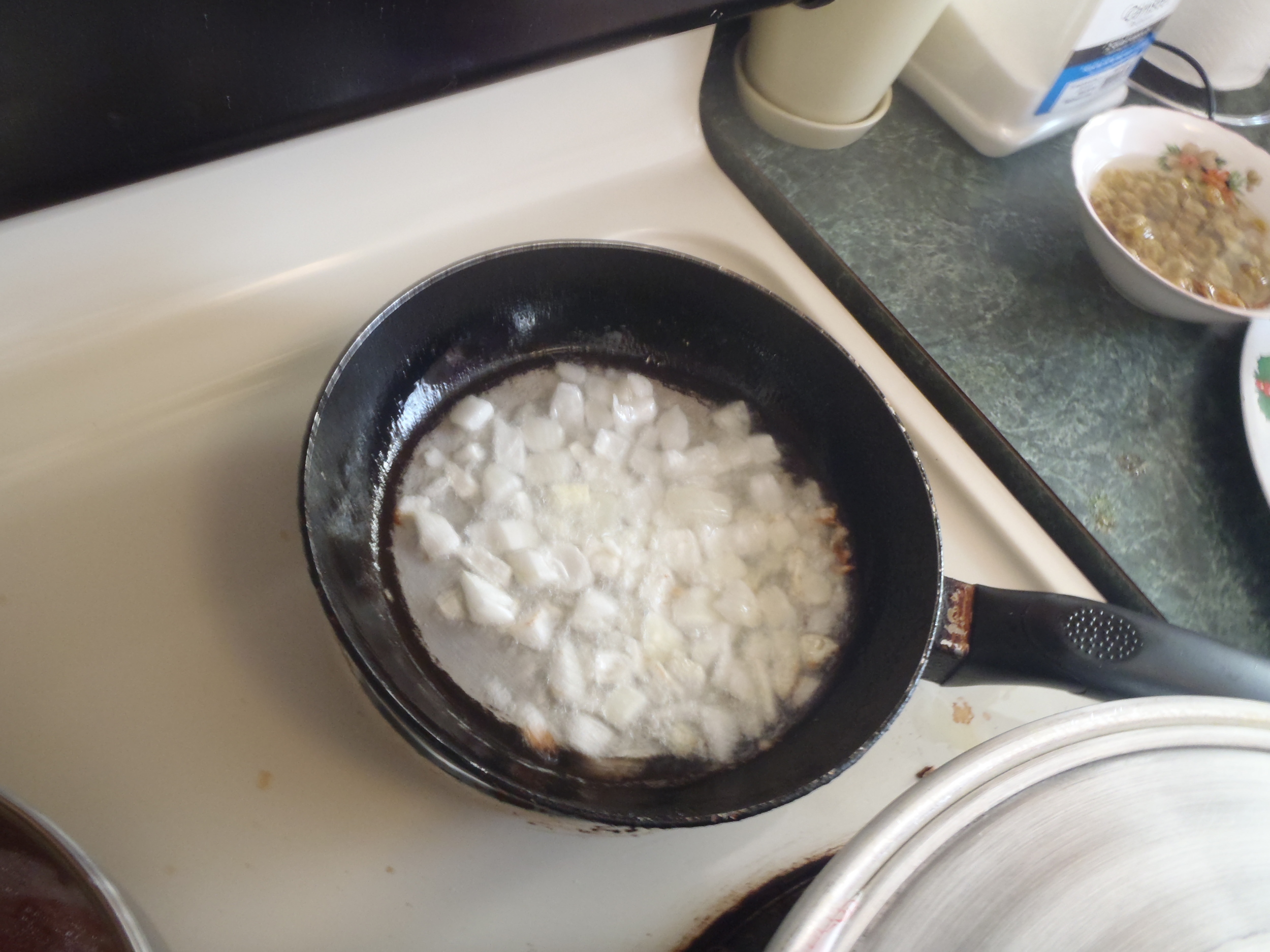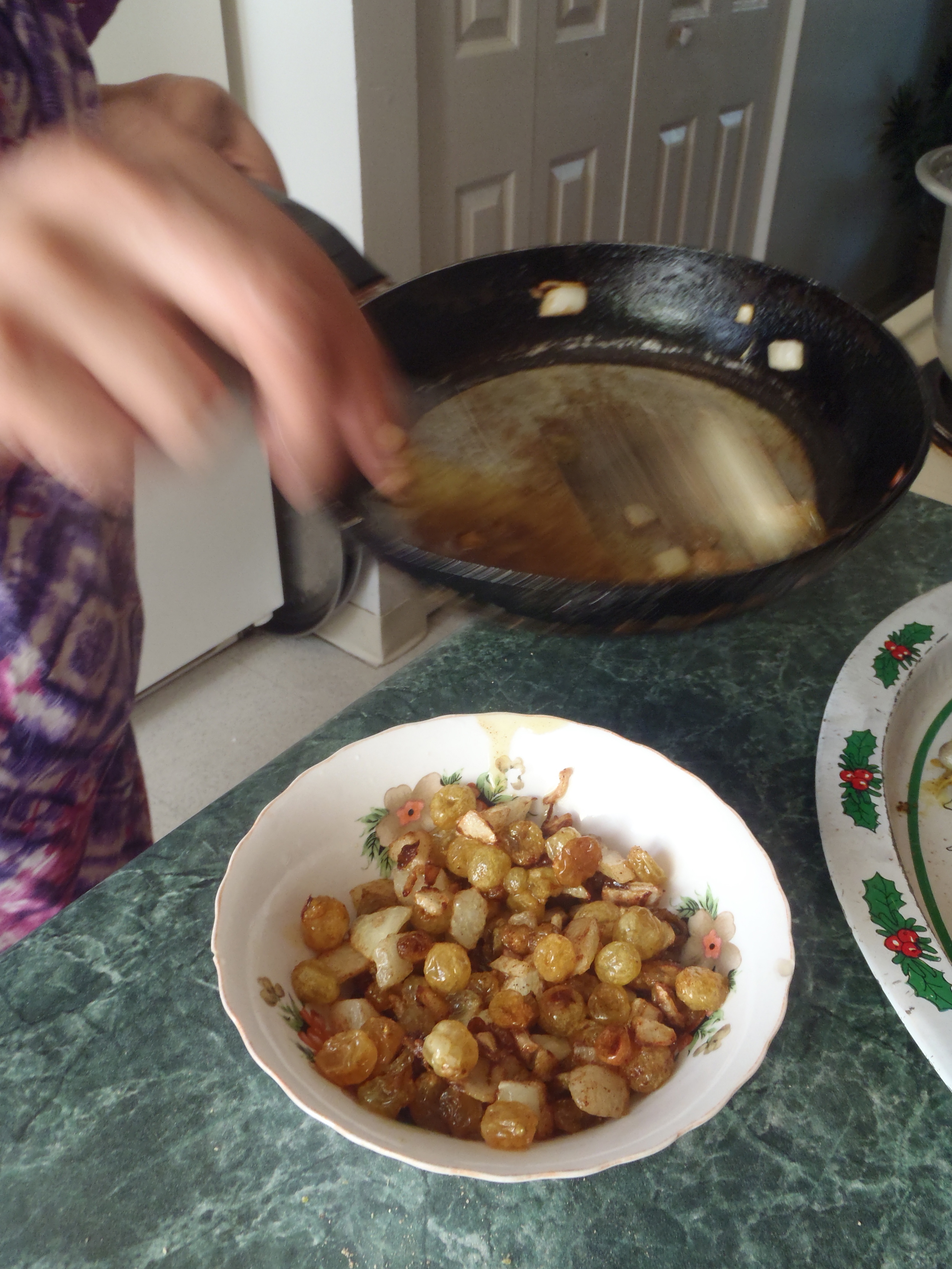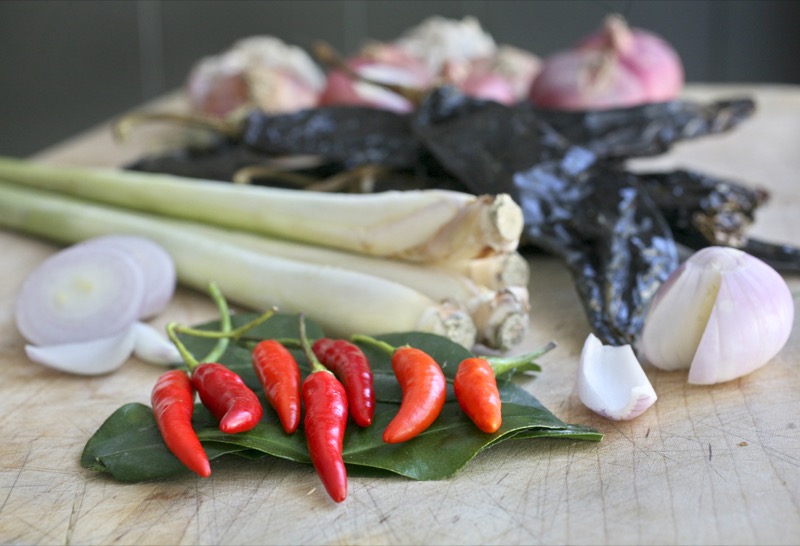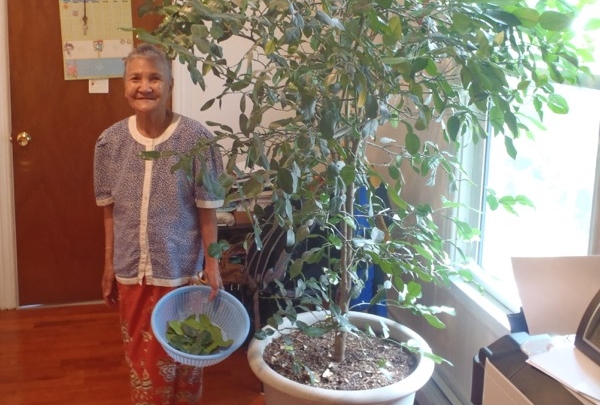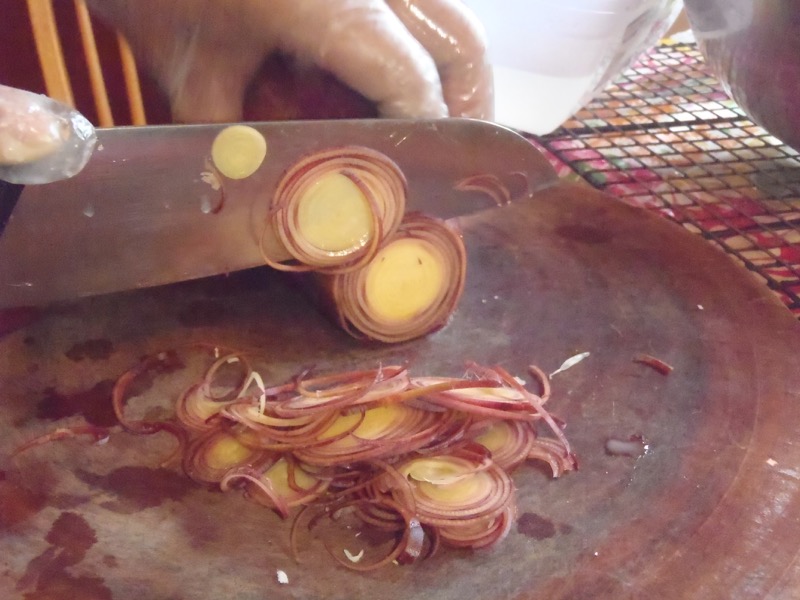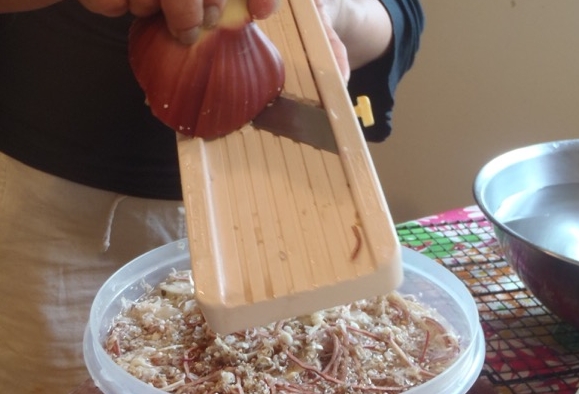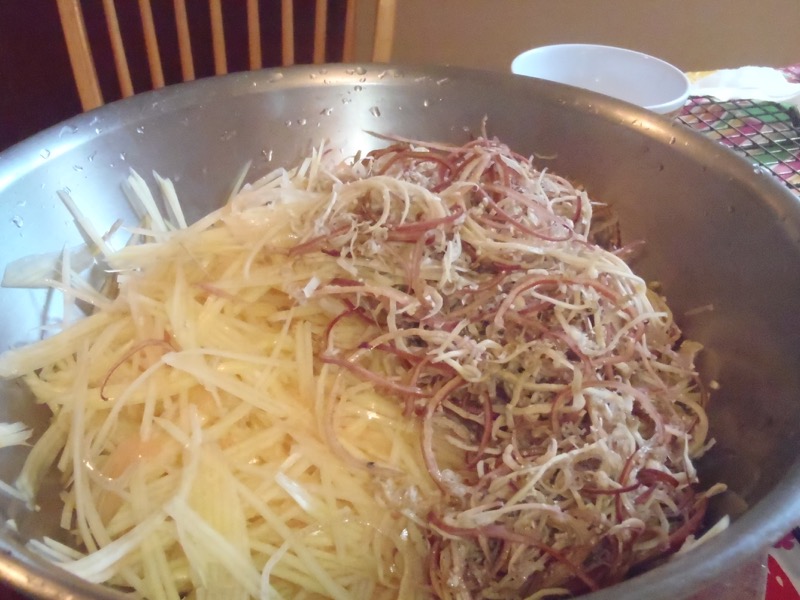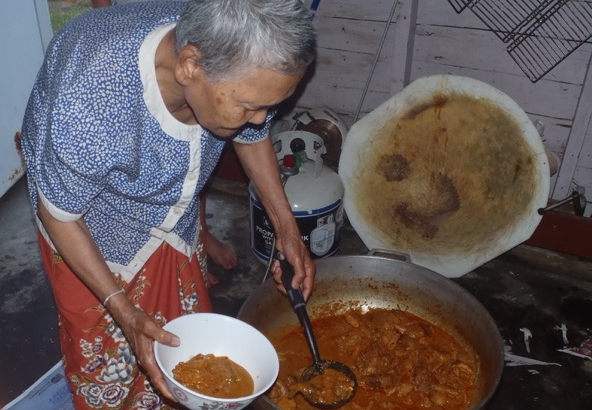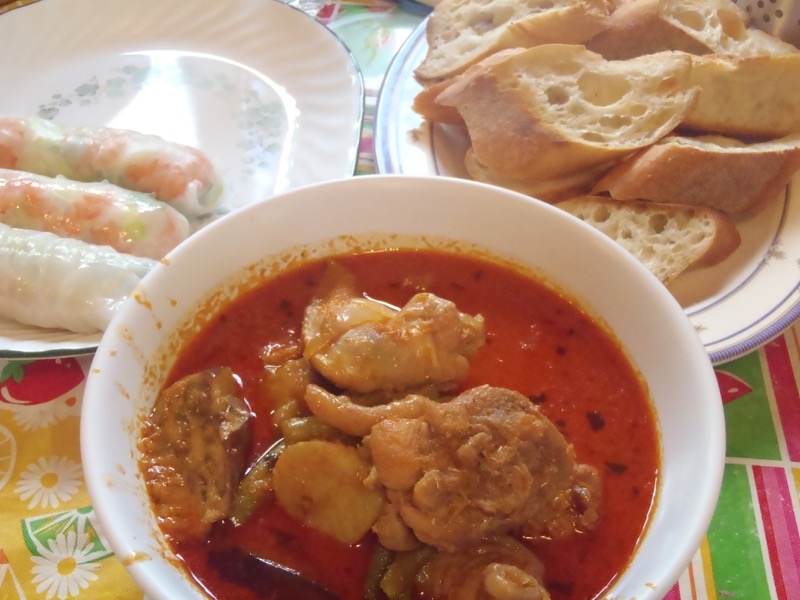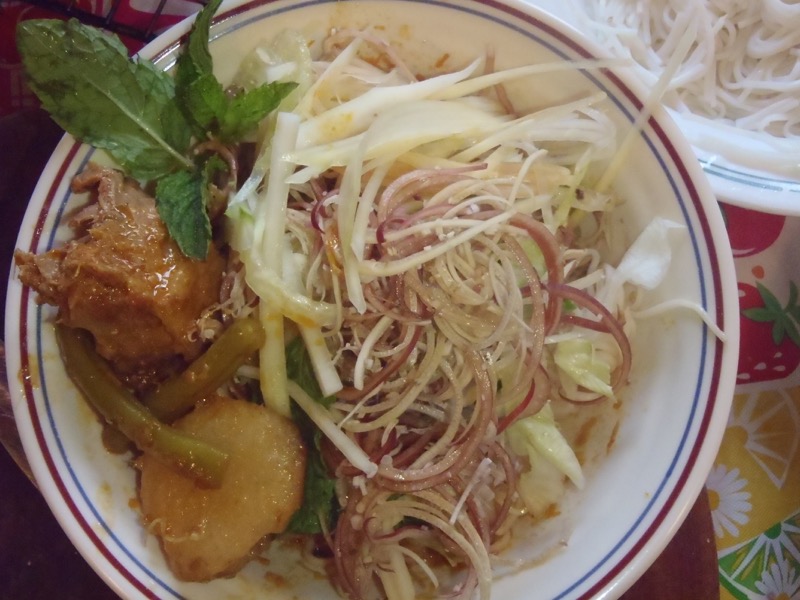Some Law
As Makara Meng, her mother, An I, and two Cambodian friends, Saran Svay and Mom Hoeung, taught Lindsay Sterling in South Portland, Maine. Photo of ingredients by Tim Greenway. Other photos by Lindsay Sterling.
Serves: 10
Cooking time: 45 minutes - 2 hours
Notes:
Making a fresh curry paste from scratch makes this stew come alive with flavor. If you don't have time for that, you can substitute 8 oz canned or jarred Thai or Cambodian red curry paste instead of making your own and have dinner ready in about 45 minutes.
Blending fresh lemongrass into the curry paste puts quite a load on the average blender or food processor. If you do not have a powerful machine such as Vitamix or high-powered food processor, I recommend steeping segments of lemongrass in the stew rather than blending it into the curry paste. You can also find frozen, finely chopped lemongrass in Asian markets which is much easier on the blender.
Adjust the spice level of your stew to your guests' liking by adding more or fewer chili peppers. I would use a quarter of a birds-eye or Thai chili pepper (the red ones above) per serving for a mildly spicy stew, half of a chili pepper per serving for medium spice level, or a whole pepper per serving for extra hot. Guests can also up the spice level of their own bowls by adding sliced fresh chili as a topping.
If you are eating gluten-free, simply add cooked rice noodles to your bowls of stew instead of serving it with sliced baguette.
Ingredients
For homemade Cambodian curry paste:
- 10 4-6 inch long dried chili peppers (mildly spicy if at all; these are for the red color mostly)
- 4 stems fresh lemongrass or 6 oz. frozen chopped lemongrass
- 10 shallots
- 1 6-inch piece of galangal root (may substitute fresh ginger root)
- 2 heads garlic
- 5-10 fresh, red birds-eye or red Thai chili peppers or 1 habanero
- 1 tsp coriander seeds
- 1 Tbsp cumin seeds
- 3 green cardamon pods (may substitute 1 tsp cardamon powder)
- 20 fresh kaffir lime leaves (you may do without but try to find them at Asian market - they are fabulous)
- 2 Tbsp salt
- 1/4 cup sugar
For stew:
- 2 Tbsp vegetable oil
- 2 cans coconut milk
- 1 cup Cambodian red curry paste (recipe above)
- 5 lb bone-in chicken pieces
- 1 tsp chicken bouillon (she used "Flavor Broth Mix" Dragonfly brand; I like Better than Bouillon)
- 2 sweet potatoes or yams
- 1/2 lb green beans
- 1 eggplant
- 1 yellow onion
- sugar to taste
- salte to taste
- 1-2 baguettes or cooked rice noodles (if gluten free use rice noodles)
- 4 kaffir lime leaves
Fresh toppings (all optional):
- fresh mung bean sprouts
- cucumber strips
- mint leaves
- cilantro leaves
- banana flower
- 1 lime
- green or hard, unripe papaya
- 1-2 birds-eye or Thai chilis
Instructions
1. Prep ingredients. Soak dried chili peppers in hot water to soften. If using whole fresh lemongrass, whack it all over with the flat side of a chef knife to release its flavorful oils. Slice into 4-6 inch segments (for steeping in your stew broth) or shave finely (for adding to the blender and turning into curry paste). If using frozen chopped lemongrass, thaw the package in bowl of hot water. Peel shallots. Peel galangal or ginger and cut into 1/2 inch chunks. Peel two heads garlic. Slice stems off chili peppers (use knife and fork so you don't touch the chilis or wash your hands after handling to avoid accidentally touching your eye or nose area with chili oil on your fingers.) Toast cumin, coriander, and cardamon for 30 seconds in a small, dry, saute pan to release the flavors. Cut 20 fresh kaffir lime leaves into thick strips, reserving 4 whole leaves for garnish later.
2. Make the curry paste. Discard the dried chili stems and seeds and put the softened flesh in high-powered food processor or heavy duty blender such as a Vitamix. Add all the ingredients "for curry paste" into the blender. Add enough water to get the ingredients moving. Blend until you have a thick red paste - don't worry about getting it super smooth.
3. Start the stew. Put a teapot of water on high. Trim the fat and skin off the chicken. Wash your hands after touching raw chicken. In a large pot on medium heat, cook the curry paste and whole lemongrass segments, if using, in oil for two minutes. Add coconut milk, chicken bouillon, and bring to a boil. Add chicken and enough hot water from the tea pot to cover the chicken with liquid by 2 inches. Stir to combine. Cook on medium high until the chicken is opaque throughout (about 25 minutes). While that cooks, clean up your workstation - wash all cutting boards, utensils and hands that touched raw chicken.
For gluten-free version: put a pot of water on to boil. Add rice noodles. Boil for 1-3 minutes or recommended cooking time on package. Strain and rinse with cold water.
4. Prepare final stew ingredients and toppings. Peel and cut sweet potatoes/yams, eggplant, and onion into bite size pieces. Wash and trim ends of green beans. Cover mung bean sprouts in fresh water, strain, and repeat two times. Peel and cut cucumber into thin strips. Wash mint and cilantro, and pick the leaves off the stems. Shave the banana flower across the flower bud with a mandolin or knife and soak the round slivers in water with lime juice, which helps keep the color. Peel papaya and use a wavy-edged peeler, mandolin, or box grater to make thin strips. Thinly slice 1-2 more birds-eye chilis crosswise so guests who like spicier food can add more heat to their own bowls. Slice remaining kaffir lime leaves into the thinnest slivers possible. Slice baguette(s) if using into thin slices.
5. Finish the stew. Once the chicken is cooked throughout, add the sweet potato/yam. After five minutes add the eggplant, onions and green beans. Turn off the heat after about 4 minutes - before the vegetables get too soft. (The vegetables will keep cooking in the hot stew long after you turn the heat off.) Taste the sauce. Could it use more salt or sugar? Adjust as you like. Sprinkle fine slivers of kaffir lime on top. When vegetables are just cooked, serve Cambodian curry stew in large bowls. Pile on fresh toppings and serve with sliced baguette. For a gluten free version, skip the baguette, add rice noodles to stew and top with fresh toppings.






